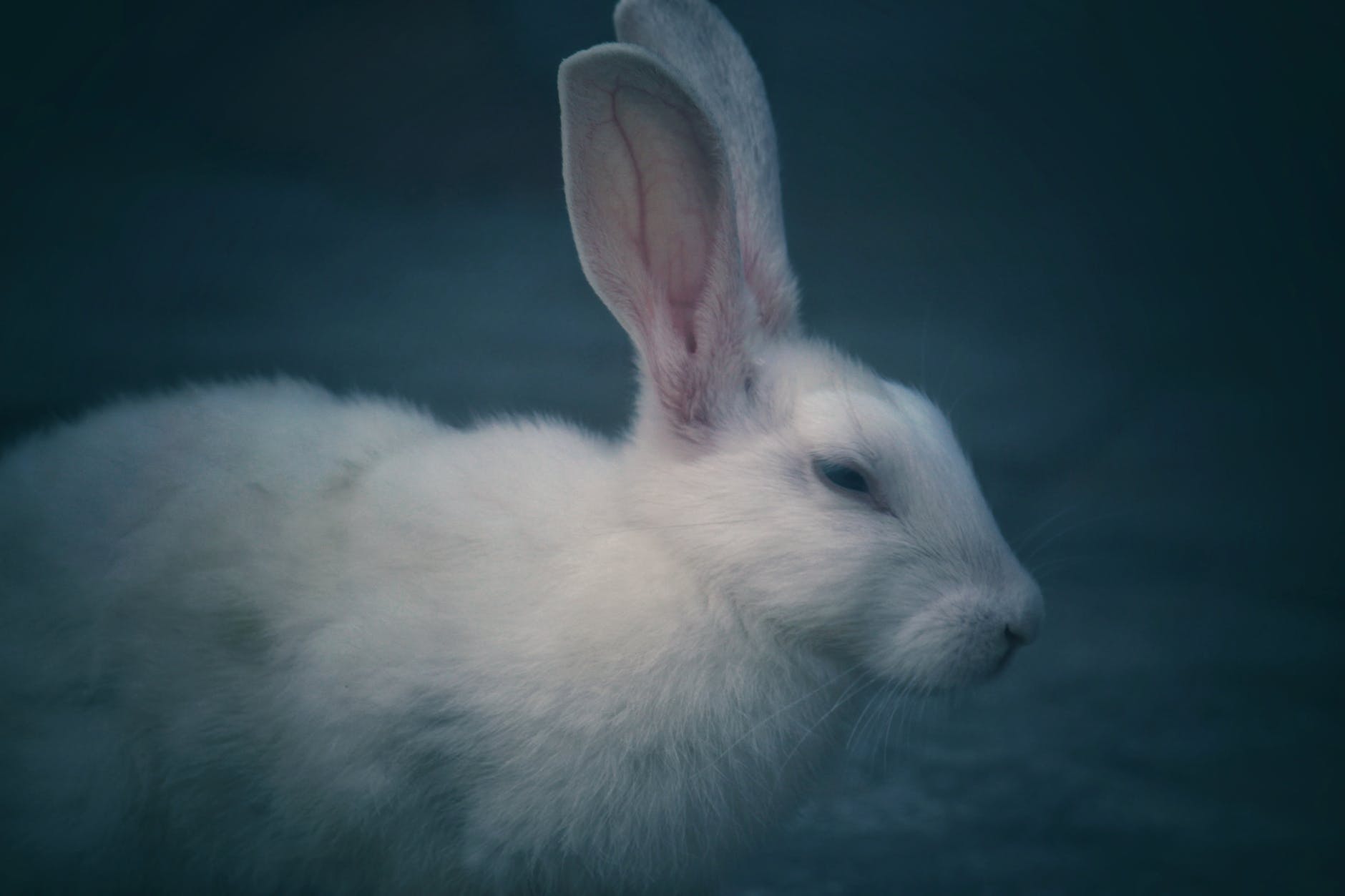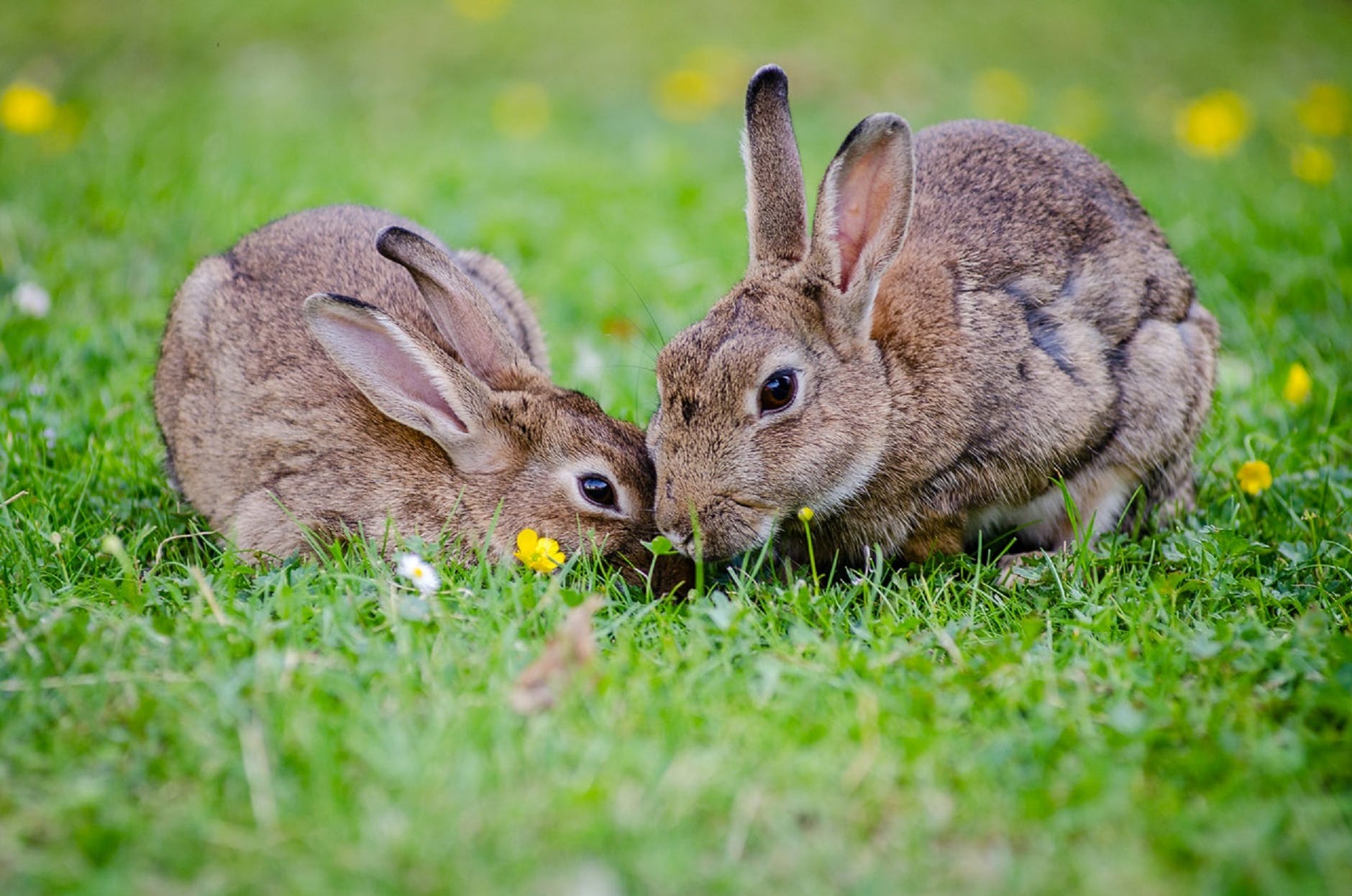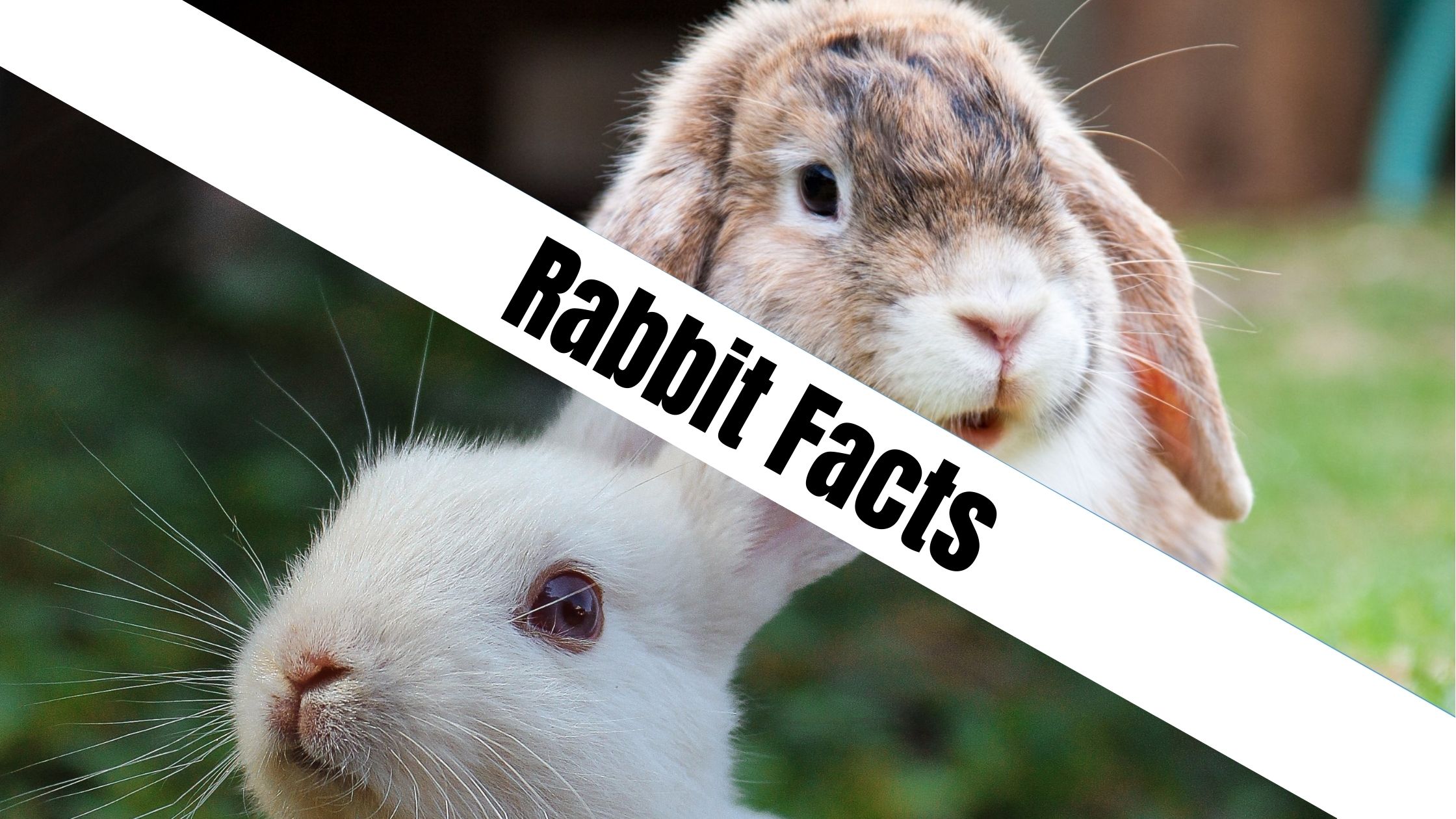Rabbits are a hugely popular pet and for good reason. With their distinctive large ears, long hind legs and cute little tails, there’s a lot to love about these fur friends!
Rabbits are very sensitive animals who form close social bonds with one another and their owners. While rabbits can live on their own, many rabbit owners choose to adopt more than one rabbit at a time because to avoid them from get lonely.
Rabbits live an average of 7-10 years in captivity but some have been known to live up to 16 years! Providing many years of companionship to their loving owners.
Whilst many people probably know that female rabbits are called does and males are known as bucks there are lots of other rabbit facts you may not be aware of.
In this article we’ll share a whopping number of facts about rabbits that we hope you find interesting.
Facts about Rabbits
We’ve compiled a fun list of facts about rabbits. Make sure to check out the links to other websites to find out even more about the facts listed.
Rabbits have a great sense of hearing
Rabbits have a strong sense of smell, hearing, and sight. Their long rabbit ears help them hear almost any predator that might be on its way to attack them.
This is particularly useful during the daytime when rabbits are more vulnerable because they can’t run as fast due to carrying extra weight from storing food in their cheeks.

Rabbits can jump very high
Rabbits are excellent jumpers, swimmers, and diggers! They’ll escape from poorly made hutches if they can get their heads through the bars of the door.
The highest recorded rabbit jump was 9 feet high! That is the height of an average human being!
In case predators approach from behind, the rabbit also has the ability to suddenly jump backwards up to 7 feet in distance which gives him/her time to escape and find shelter.
Rabbits teeth never stop growing
Unlike humans, rabbit teeth never stop growing throughout its entire life, this is why they constantly need to chew on items such as wood or hay, otherwise their teeth would grow so big they wouldn’t be able to eat!
Rabbits have 14 teeth so it isn’t unusual for them to lose a few every once in a while and they actually go through 4 sets in their life.
Rabbits are social animals
Rabbits are very social animals that can communicate with other rabbits through different sounds like whistling or general noise making. They have a complex language where they let other rabbits know what dangers lurk nearby by thumping on surfaces with their hind legs while making grunting noises, which is how they warn other rabbits of predators in the area or conversely signal that a predator has been spotted and that all is clear. This way of communicating is called “doe-ing” and it is widely used by rabbit mothers (does) to warn their young ones of incoming predators. – https://www.petfinder.com/rabbits/
A group of rabbits has a special name
A group of wild rabbits is called a fluffle.

Rabbits are crepuscular
Rabbits are crepuscular foragers which means that they prefer to do most of their feeding during the crepuscular times of day which are either dawn or dusk, however, it is not unusual for them to take a couple of hours’ break from this schedule and feed around midday as well.
A rabbits heart beats quite fast
A rabbit’s heart beats between 115-175 times per minute depending on how relaxed or stressed they are.
The Rabbit appears on the Chinese Zodiac
The rabbit is the third animal in the Chinese Zodiac behind the Dragon and the Snake.
The Rabbit is considered an Indicator Species
The rabbit is considered an “indicator species” because their survival and well being is directly related to the surroundings they live in.
Rabbits can be trained
Rabbits can be trained to do tricks just like dogs!
They can also be litter trained too. Litter training your rabbit is simple, simply place a litter tray next to where they eat, sleep and play and they should quickly learn where to do their business!
Rabbits are prey anaimals
Rabbits are prey animals and they evolved to be nocturnal to avoid predators like wolves, bears, and eagles more successfully than diurnal species like squirrels or guinea pigs, that would have more of a chance of being noticed by their predators while foraging for food during the day time when they can’t run as fast due to carrying extra weight from storing food in their cheeks (which is where the term “cheeky” came from).
Rabbits are categorized as lagomorphs
Rabbits are classified as lagomorphs. They were previously categorizes as both lagomorphs (because they live with hares and pikas) and rodents (because of their teeth).
They are now classified solely as members of their order known as lagomorphs, with 39 different species included in this category.
The only lagomorphs that are born with fur and eyes closed (hatchlings) are rabbits, hares, and pikas.
Rabbits can be nocturnal or diurnal
Rabbits can be either nocturnal or diurnal depending on their location and the surrounding environment. For example, rabbits in open areas like grasslands tend to be active during the daytime and those living near forests prefer to forage at night when it’s safer from predators like owls or foxes that would make them a meal.
Rabbits eat their own poo
Rabbits produce two types of droppings: hard round pellets which they tend to expel first thing in the morning and soft black smelly caecotrophs that are high in nutrients which they only need to expel once or twice a week because it passes through their digestive system up to four times before being expelled as full droppings.
All rabbits eat their poop, called cecotropes because it contains essential vitamins and minerals that help with normal growth and development just like how other animals might eat their placenta after birthing young.
These nutrient-rich droplets are produced from special sections of their intestines called the cecum and are eaten directly from their anus, conveniently called “coprophagia”. These pellets contain a high level of protein and fiber that rabbits need to survive.
Rabbits are often referred to as Bunnies
The name “bunny” comes from the word “bun”, which is an old English term for rabbit or hare, even though adult rabbits are not actually bunnies.
Rabbits have lots of scent glands all over their bodies
Rabbits have a large number of scent glands all over their bodies that they use to communicate with other rabbits by rubbing their chins on objects, holding their feet upright, and leaving tiny drops of urine everywhere that indicate whether the area is safe or unsafe from predators, if it’s been visited by another rabbit recently or if it’s about to be used as a nesting site.
Rabbits have a relatively short lifespan
The average lifespan for rabbits is 5 to 10 years, however, if they are kept indoors and well looked after usually live longer because they aren’t bothered by environmental factors like seasons or predatory animals.
In Australia, Rabbits used for food are called Fryers
Rabbits used for food in Australia are called “fryers” because their meat is so young and tender that it can be fried quite easily, but the age at which a rabbit is slaughtered for its meat depends on what kind of breed it is and how much fat it has accumulated.
Domesticated rabbits have a long history
The domestication of the rabbit can be traced back to the 3rd Century BC when they were kept by warlords in China for their meat, fur, and blood which was used as a form of medicine during that period because the Chinese believed that the liver could be rejuvenated by drinking it.
Rabbits shed their hair
Rabbits shed their hair in patches throughout the year, but more often in fall and spring because these times of year are when light levels decrease and also when food is harder to find so their coat needs to grow thicker to keep them warm.
Rabbits are herbivores
Rabbits are herbivores who spend most of their day looking for food as they need to eat a large amount every day (just like humans). One rabbit eats as much as 2,5 kilograms (or about 5 pounds) of food every single day! The rabbit’s digestive system is extremely fast and takes only a few hours to process each meal.
In the wild, rabbits eat young grass shoots as well as a wide variety of other leafy greens and vegetables.
Domesticated rabbits eat hay because it’s high in fiber and helps to keep them from being constipated but if their diet completely consists of just hay then they’ll fail to get the nutrients that would be found by including a wide variety of greens in their daily eating regimen.
Rabbits breed fast and often
A female rabbit can become pregnant within 12 hours of mating!
The gestation period for baby rabbits (referred to as kits) averages 30 days, but it can vary between 28 – 35 days if she’s bred mid-season when food is plentiful or during fall before winter sets in which prevents them from mating again until springtime when food returns.
Rabbits struggle to be sick
Rabbits cannot vomit like humans because their throats are much narrower and because of this they mustn’t be fed rapidly or given any form of sugary treats.
Rabbits are very fast
Rabbits can run up to 35 miles per hour and as such, they’re able to outrun most predators!
Rabbits are not rodents
Rabbits are not rodents. Although they are still mammals, they are more closely related to horses, cats, and dogs than to mice.
